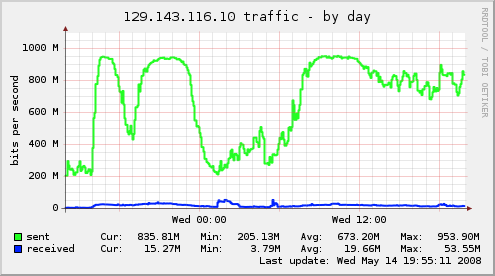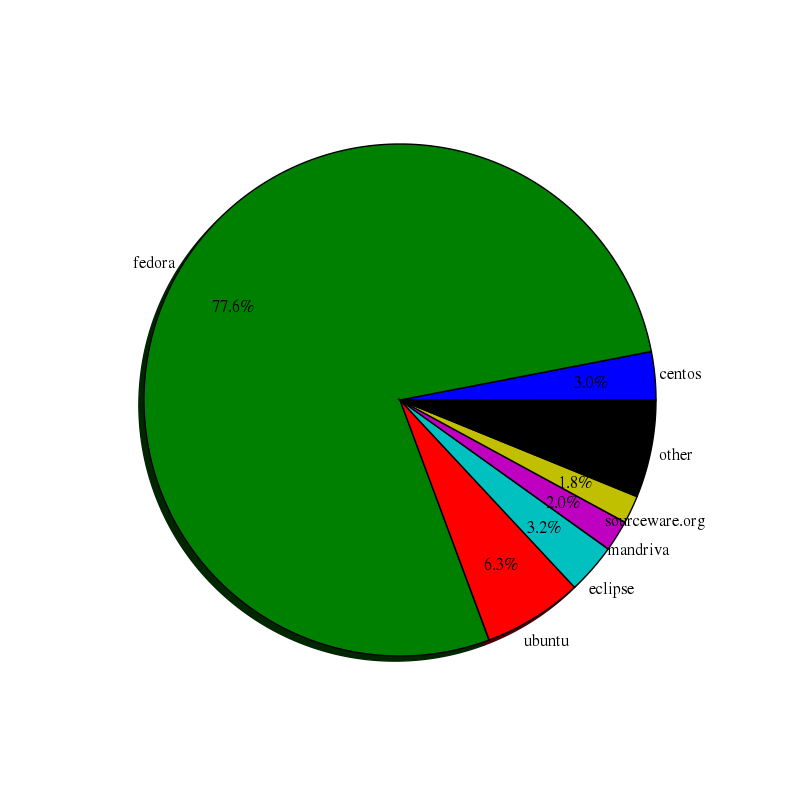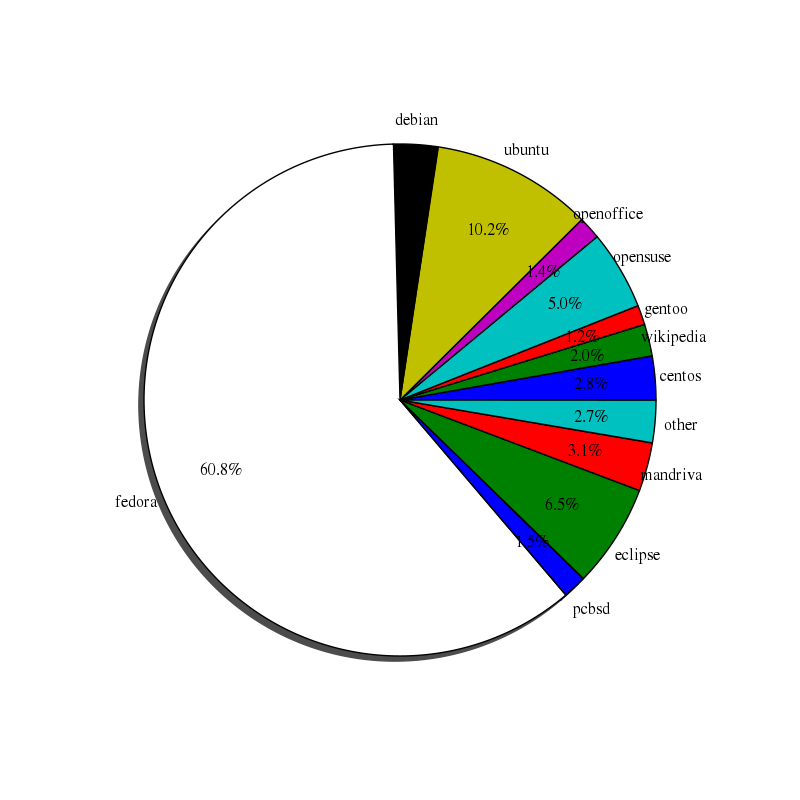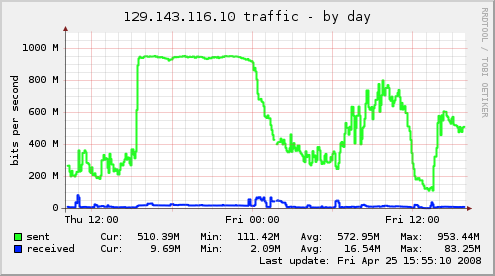Our mirror server has been generating download maps for almost 10 years (since August 2009). This is done by going through all our download log files (HTTP, FTP, RSYNC) and using GeoIP and the Matplotlib Basemap Toolkit to draw maps from where our mirror server is being accessed.
I have taken the output from almost ten years and created the following animations. The first animation shows clients accessing all mirrored content:
As the mirror server is running Fedora it is updated once a year which might result in an updated version of Basemap once a year. The update usually happens in December or January which sometimes can be seen in the animation when the output changes. Updating to Fedora 27 (December 2017) resulted in a Basemap version which started to draw different results and the last update to Fedora 29 (December 2018) can also be seen as switching to Python 3 removed most of the clients from the map (only visible in the last second of the animation). It seems some of the calculations are giving different results in Python 3.
In addition to the map showing the accesses for all mirrored data, there is also an animation for clients accessing files from our Fedora mirror:
The interesting thing about only looking at clients accessing Fedora files is that it can be seen that most accesses are actually from Europe. This seems to indicate that Fedora's mirroring system partially succeeds in directing clients to close by mirrors. Looking at the location of clients accessing our EPEL mirror it seems to work even better. This is probably related to the much larger number of existing EPEL mirrors:
Another interesting effect of upgrading once a year can be seen around 6:42 in the EPEL animation. After upgrading to Fedora 25 the generated maps where upside down for a few days until I was able to fix it.



